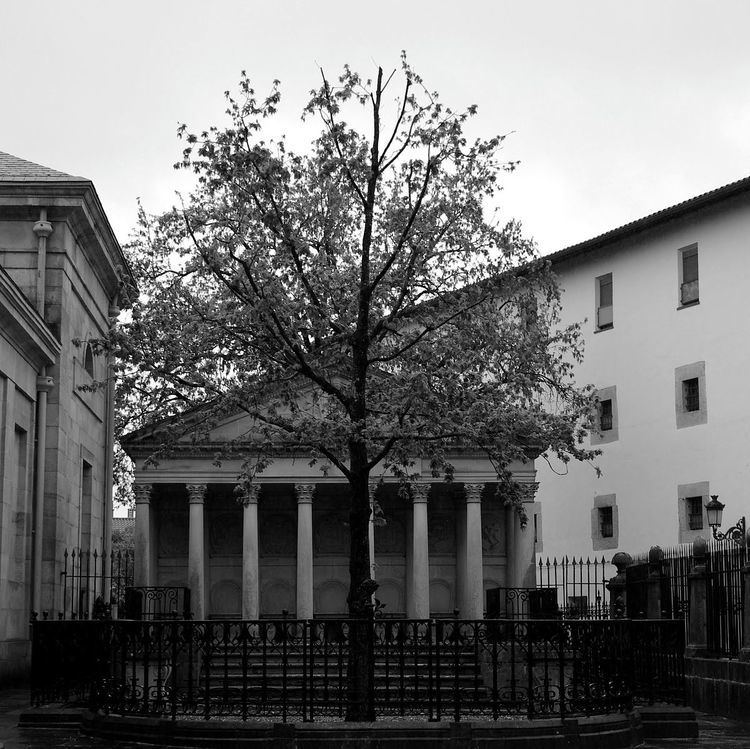Province Biscay | ||
 | ||
Address Kalea Karmelo Etxegarai, 11002, 48300 Gernika, Bizkaia, Spain Similar Museo de la Paz de Guernica, Museo Euskal Herria, Gaztelugatxe, Santimamiñe, Parque de los pueblos de Europa | ||
Gernikako arbola con letra
Gernikako Arbola ("the Tree of Gernika" in Basque) is an oak tree that symbolizes traditional freedoms for the Biscayan people, and by extension for the Basque people as a whole. The Lords of Biscay (including kings of Castile and Carlist pretenders to the throne) swore to respect the Biscayan liberties under it, and the modern Lehendakari of the Basque Country swears his charge there.
Contents
Iparragirre gernikako arbola
The tree
In the Middle Ages, representatives of the villages of Biscay would hold assemblies under local big trees. As time passed, the role of separate assemblies was superseded by the Guernica Assembly in 1512, and its oak would acquire a symbolic meaning, with actual assemblies being held in a purpose-built hermitage-house (the current building is from 1833). It was the Spanish regent Maria Christina accompanied by her infant daughter Queen Isabella II the last Spanish monarch to swear an oath to the charters under the iconic oak in 1839.
The known specimens form a dynasty:
The tree's significance is illustrated by an event which occurred shortly after the Guernica bombings. When the Francoist troops took the town, the Tercio of Begoña, formed by Carlist volunteers from Biscay, put an armed guard around the tree to protect it against the Falangists, who had wanted to fell this symbol of Basque nationalism.
An oak tree is depicted on the heraldic arms of Biscay and subsequently on the arms of many of the towns of Biscay. An oak leaf logo is being used by the local government of Biscay. The logo of the Basque nationalist party Eusko Alkartasuna has one half red and the other green, the colors of the Basque flag. An old version of the logo of the nationalist youth organisation Jarrai also display oak leaves.
The Basque authorities present descendants of the tree as a symbol of friendship to Basque diaspora groups and related cities.
